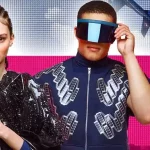Eco-Tech Marvels: Sustainable Design Insights from Nature’s Blueprint
- Post
- August 7, 2023
- Design Inspiration, UI/UX Design, Web Design
- 0 Comments
Nature’s brilliance has served as the ultimate muse for design and engineering, yielding solutions that are not only functional but also environmentally friendly. In this article, we explore the fascinating union of technology and ecological principles, uncovering sustainable design ideas that echo the beauty and efficiency of the natural world.
The Blueprint of Nature: Biomimicry Unveiled
Biomimicry – a term that encapsulates the idea of drawing design inspiration from nature’s ingenuity. This approach mimics the strategies, structures, and processes observed in the wild, resulting in innovative designs that optimize efficiency and sustainability. From Velcro, inspired by the hooks of burdock seeds, to bullet trains emulating the form of kingfisher beaks, biomimicry showcases how nature’s blueprints can revolutionize technological advancements.
Flora and Fauna: A Treasure Trove of Design Inspiration
The diverse flora and fauna of our planet offer a treasure trove of design inspiration ideas. The intricate fractal patterns seen in leaves and ferns have inspired architects to create energy-efficient buildings that maximize sunlight utilization. Similarly, the swift and silent flight of owls has influenced the development of noise-reducing aircraft wings. By delving into nature’s repertoire, designers and engineers can unravel innovative solutions that echo the harmony of the environment.
Biophilic UI/UX Design: Merging Technology and Organic Aesthetics
In the digital landscape, user experience (UX) and user interface (UI) design play a pivotal role. The concept of biophilic design incorporates elements of nature into digital interfaces, fostering a sense of connection and calmness. By integrating natural textures, colors, and patterns into UI/UX design, websites and applications can evoke a harmonious blend of technology and the natural world, creating a visually appealing and soothing user experience.
Symbiosis in Sustainable Materials: From Waste to Worth
The concept of turning waste into valuable resources has gained significant traction in recent times. By emulating the circular systems found in nature, innovators have crafted sustainable materials from unexpected sources. For instance, mushroom mycelium has been transformed into packaging materials that are biodegradable and compostable, demonstrating how nature’s blueprint guides us towards sustainable material innovation.
Eco-Tech in Motion: Self-Sustaining Energy Systems
Nature’s ecosystems are often self-sustaining, relying on intricate interdependencies to thrive. The realm of eco-tech marvels includes energy systems that draw inspiration from these natural cycles. Solar trees that mimic the efficiency of photosynthesis, wind turbines inspired by the swaying motion of grass, and kinetic tiles that generate power from footsteps exemplify how technology can mirror nature’s ability to harness and generate energy.
Adaptive Resilience: Learning from Ecosystem Dynamics
Ecosystems are resilient, adapting to changing conditions to ensure survival. This adaptive resilience serves as a valuable lesson for designing systems that can withstand challenges. By observing how nature navigates disruptions and adapts to changing environments, designers can engineer solutions that embrace change, whether in urban planning, disaster management, or infrastructure development.
Nurturing Biodiversity: Sustainable Urban Landscapes
Urbanization poses a unique challenge, as it can disconnect humans from the natural world. However, sustainable urban landscapes that prioritize biodiversity can mitigate this impact. Rooftop gardens, vertical forests, and green infrastructure solutions inspired by natural ecosystems can create a harmonious coexistence between urban environments and nature, enhancing quality of life while reducing ecological footprints.
Merging Nature and Technology: The Internet of Natural Things (IoNT)
The Internet of Things (IoT) has transformed how we interact with our surroundings, but the Internet of Natural Things (IoNT) takes this connectivity a step further. By integrating sensors and technology with the natural environment, IoNT enables real-time data collection from ecosystems, aiding in conservation efforts, climate monitoring, and disaster prediction. This convergence of technology and nature exemplifies the potential for positive impact.
Eco-Futurism: Pioneering Sustainable Design
As we envision the future, eco-futurism emerges as a promising path. This ideology integrates cutting-edge technology with sustainability, promoting innovation that benefits both humanity and the environment. From 3D-printed coral reefs to biodegradable electronics, eco-futurism showcases the power of combining imagination and ecological insights to redefine technological progress.
Final words
In the realm of sustainable design, nature’s blueprint serves as a wellspring of inspiration that guides technological innovation. By harnessing the efficiency, adaptability, and beauty of the natural world, designers and engineers have embarked on a journey that marries creativity and ecological responsibility. The marriage of technology and sustainability not only unlocks innovative solutions but also fosters a harmonious coexistence between humanity and nature.
Commonly Asked Questions
Q1: How does biomimicry influence modern design?
Biomimicry draws inspiration from nature’s patterns, processes, and strategies to create innovative designs that optimize efficiency and sustainability. This approach has influenced everything from architecture to transportation and continues to revolutionize various industries.
Q2: What is biophilic UI/UX design?
Biophilic UI/UX design integrates elements of nature into digital interfaces, creating a visually appealing and soothing user experience. By incorporating natural textures, colors, and patterns, designers evoke a sense of connection between technology and the natural world.
Q3: How do eco-tech marvels contribute to energy sustainability?
Eco-tech marvels, such as solar trees and kinetic tiles, emulate natural energy systems to generate power. By mimicking processes like photosynthesis and harnessing motion, these innovations offer sustainable energy solutions inspired by nature.
Q4: What is the Internet of Natural Things (IoNT)?
The Internet of Natural Things (IoNT) extends the concept of IoT by integrating technology with the natural environment. This allows real-time data collection from ecosystems, aiding in conservation, climate monitoring, and disaster prediction.
Q5: How does eco-futurism shape technological advancements?
Eco-futurism blends cutting-edge technology with sustainability principles, leading to innovations like 3D-printed coral reefs and biodegradable electronics. This approach envisions a future where technology serves both humanity and the environment.



